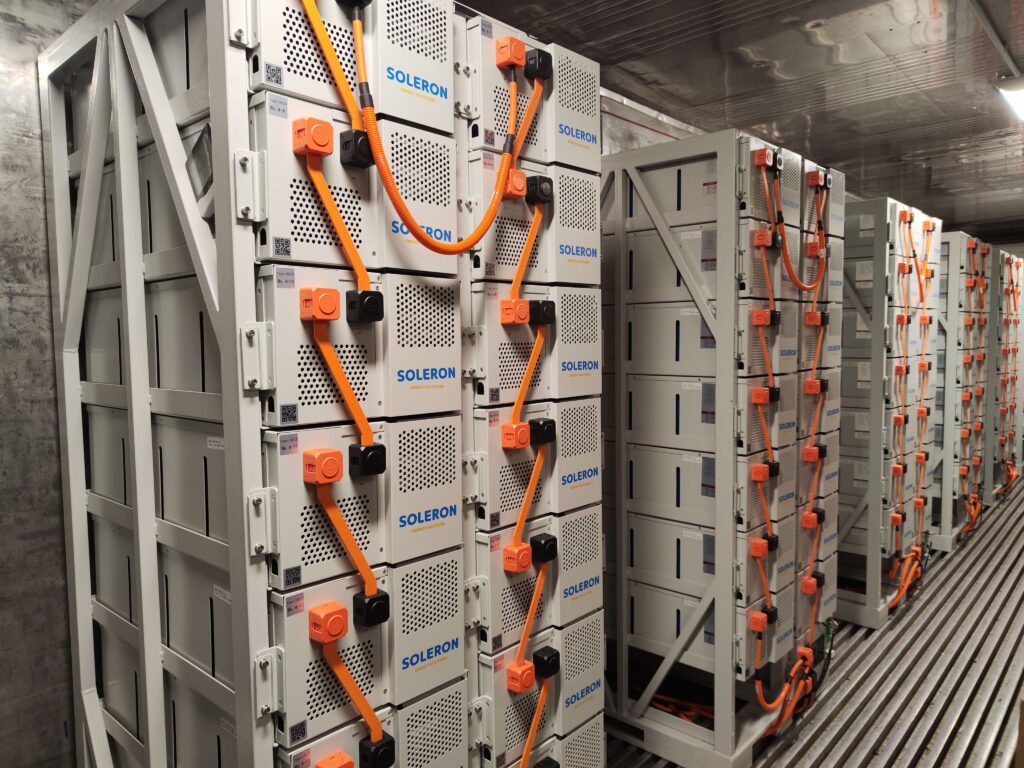The Frequency Reserves Market in Estonia and Its Opportunities
The main principle of an energy system’s operation is maintaining a balance between production and consumption. When production exceeds consumption, voltage and frequency rise; when consumption exceeds production, voltage drops, and frequency cannot be maintained at the required level. Until now, the frequency in Estonia’s electricity system has been maintained by Russia’s large inertial system. In the Baltic region, frequency has primarily been supported by Latvian hydroelectric power plants and Estonia’s controllable oil shale power plants. The increasing integration of renewable energy into the grid makes forecasting more complex, and lower prices hinder the entry of oil shale plants into the market. Thus, solutions must be found for both covering production deficits and managing surpluses.
What Is the Frequency Reserves Market?
The frequency reserves market is a system that ensures the stability of the electricity grid by helping balance electricity production and consumption in real-time. It is a critical part of the energy grid’s operation. Even small fluctuations can cause frequency deviations, which in turn can lead to power outages or equipment failures. The primary goal of the market is to keep the grid frequency within a specified range (50 Hz in Europe) and ensure smooth system operation.
In a functioning frequency reserves market, the required balance in the system is maintained by the market itself, meaning producers and consumers adjust their production volumes and consumption behavior based on market signals. The system operator (Elering in Estonia) corrects deviations when necessary. To maintain balance, the system operator can activate reserves, such as quickly-starting (gas) reserve power plants. The frequency reserves market can also procure aggregated reserves created through demand management.
How Does the Frequency Reserves Market Work?
The frequency reserves market allows the system operator to quickly respond to changes in production and consumption in the electricity system by activating reserve capacities. Reasons for activating reserves may include:
- Production issues: Unexpected interruptions in power plant operations.
- Connection failures: A cable connecting the system to a neighboring country goes offline.
- Consumption fluctuations: Higher or lower electricity consumption than predicted.
- Renewable energy variability: Weather-driven fluctuations in wind and solar energy production.
Producers, large consumers, and storage system owners participate in the market by offering their capacity to balance production and consumption differences. Market operations are often automated: grid operators send signals to which market participants respond within seconds or minutes. This rapid response is crucial for maintaining grid stability. In the Baltic region, a joint frequency reserves market is in place, utilizing products such as mFRR (manual Frequency Restoration Reserve), aFRR (automatic Frequency Restoration Reserve), and FCR (Frequency Containment Reserve).
The Frequency Reserves Market in the Era of Renewable Energy
The growing use of renewable energy (wind and solar) has made implementing the frequency reserves market even more important. Renewable energy is inherently variable and unpredictable, which can cause grid imbalances. For instance, cloudy or calm weather can reduce production, while strong winds may lead to overproduction, threatening grid stability.
The frequency reserves market facilitates the integration of renewable energy into the grid by providing rapid response capabilities to compensate for production fluctuations. Storage solutions such as batteries and pumped hydro storage act as essential buffers, enabling smooth market operations.
Desynchronization from the Russian Grid and Its Impact on the Baltic States
Estonia, Latvia, and Lithuania have so far been connected to the Russian and Belarusian electricity grid (BRELL frequency area). This means that the frequency of the Baltic electricity grid has been managed in cooperation with Russia. In February 2025, desynchronization from the Russian grid will occur, and the transition to the European electricity system (ENTSO-E) will take place. This step will enhance energy security but poses new challenges for grid stability and frequency regulation.
Separation from the Russian grid means the Baltic region will need to manage frequency independently or rely on the European frequency reserves market. This requires significant investments in frequency reserves and energy storage solutions capable of ensuring stability even in unexpected situations. Additionally, the need for rapid response capabilities and local frequency reserves will increase.
Economic and Environmental Benefits
The importance of the frequency reserves market goes beyond ensuring grid stability—it also offers several economic and environmental benefits:
- Revenue generation: Energy producers and storage solution providers can earn additional income by offering flexibility and responsiveness.
- Renewable energy utilization: Greater integration of local renewable energy sources in grid balancing.
- Cost reduction: Avoidance of penalties and outages associated with frequency deviations.
To participate in the frequency reserves market, a minimum capacity of 1 MW is required. Aggregating smaller consumers and producers into a single portfolio is called aggregation, which allows multiple clients’ capacities to be offered to the market simultaneously. Soleron Energy OÜ has signed an aggregation agreement with the system operator and developed a trading interface that enables participation in the frequency reserves market with various assets.
Want to earn revenue on the frequency market with your storage solution of at least 50 kW power? Contact us.





